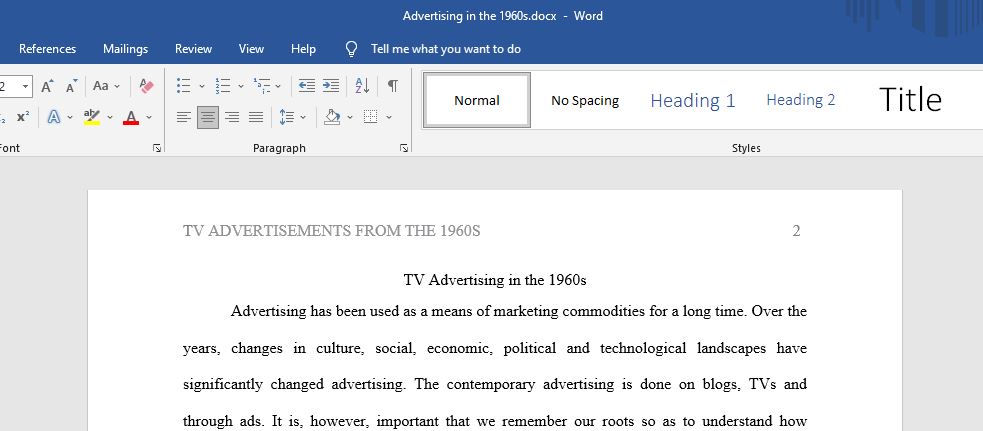Reflect on TV Advertising in the 1960s
CHOSEN TOPIC: I will be analyzing advertisements from the 1960s by their
similarities, characteristics, and overall message and tone the ads are
trying to sell. I will be presenting this in an essay format. The ads found
will be through a playlist on YouTube and will analyze around 6-7
advertisements. They will be ads from the early 1960s. For this source
analysis, you should look at TV commercials from a specific day.
Make note of patterns or recurring themes that stand out, and then write a
response that uses specific examples to support a claim about these commercials.
So, for instance, if I noticed that many ads for cigarettes featured endorsements from
doctors (very common in the 1950s), I might say, "Many commercials in this period
acknowledge health concerns regarding smoking, but they also try to alleviate those
concerns by having doctors endorse specific brands." And then I'd describe some of
the examples.
Pay attention to the types of products advertised, the aesthetics that the commercials
employ, the implied (or explicitly stated) audience, the qualities of the products that
commercials focus on and present as appealing to viewers, etc. Don't just say "these
show the ideals of the time," because that is something we can assume.
Playlist: https://www.youtube.com/watch?v=rDiEr31QMFU
Includes commercials for: Borateen from Borax Maxwell Coffee TV
Guide Firebird Gasoline Contac Cold Medicine Studebaker Lark Handi-
Wrap STP Oil
The research paper option will be about 1800-2500 words (~6-7 full pages, double-spaced).
The goal here is to write a history paper that makes a claim about the place of one or more
films or TV shows in a specific historical context. Choose something from before 2005. Here are
some examples from class:
Doty claims that Lucille Ball's character in I Love Lucy shows traces of her earlier film
personas. (So it looks at I Love Lucy in the context of Lucille Ball's film career.)
Gemünden claims that To Be or Not To Be's performance-based narrative comments on
the Nazi Party's own performativity, as well as on the censorship practices of Hollywood.
(So it looks at To Be or Not To Be in the context of Nazi performativity and Hollywood
censorship. You would only choose one.)
Or, you can look at print primary sources about popular culture. For instance, if you noticed
that fan publications depicted Hollywood romances in particular ways, you might write an essay
about that, and you would construct a thesis about what those representations might tell us
about the time period in which they occurred. You would not have to look at every issue of
these magazines (if you were writing a dissertation on this topic, that's what you would do), but
you should still look at a good number of them. For that reason, it would probably be a good
idea to limit your perspective to a single year or so, just to give shape to the project. You can
also use the "Independent Voices" database for this project, and could, for instance, look at
how feminist publications discussed films in the 1970s, or something like that. There are many
options.
In all cases, keep the focus narrow and remember that this should be a history paper. If you're
just describing the film, it won't be successful. You should have at least five sources relevant to
your project. There should also be a bibliography that lists your sources following the MLA or
Chicago (notes/bibliography) citation style. In this bibliography, you should specify which are
primary and which are secondary, like so:
Kramer, Peter. The New Hollywood: From Bonnie and Clyde to Star Wars. New York: Wallflower,
2005. Secondary source.
This is Chicago style. You may also use the MLA style, which is similar. The Purdue OWL website
has useful pages on each.
Answer preview:

word limit:1825
